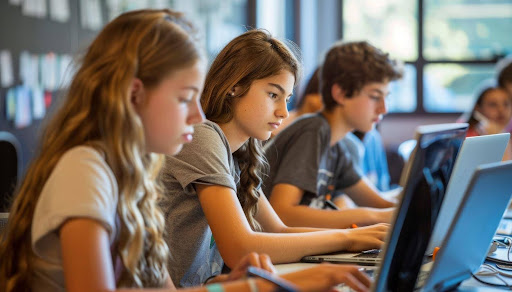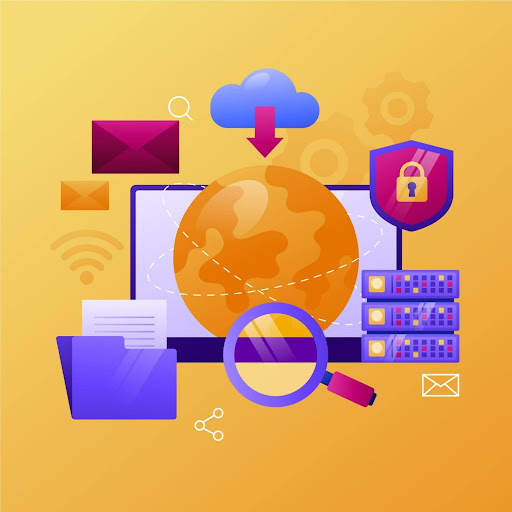The quick move to remote and hybrid learning in recent years has changed the way classes are taught. From using video chat to cloud tasks and online tests, schools now depend a lot on web tools for keeping things running and easy to access.
The more extensive use of connected devices at educational institutions makes them more prone to ransomware, phishing attacks, and data breaches. Networks in such establishments are not adequately protected, thus increasing vulnerability.
Upgrading digital safety has become an imperative rather than a voluntary action to keep student information safe and maintain a secure learning environment.
The Rising Need for Protection in Online Education
As long as schools use digital tools as part of their delivery mechanism for remote learning, the robust prevention of cyber threats has become most urgent. Online activity has given way to pathways for malware and phishing scams entry, with one of the most dangerous threats about to be discussed: Ransomware. What is a ransomware attack? This is when software encrypts vital data such as student records, gradebooks, and financial information and keeps it hostage until a ransom is paid. Without proper defenses, an entire school system can get paralyzed. Knowing what ransomware is and reading through Moonlock’s protection steps will help you prevent such an attack. The earlier schools invest in cybersecurity measures, the better they can protect themselves from ransomware.
But why are schools victims in the first place? Schools typically house vast volumes of personal and academic data with very meager IT resources. Such factors as old systems, unpatched software, and the general absence of cybersecurity workers make K–12 districts and universities the most appealing targets to cybercriminals.
How Schools Are Strengthening Cybersecurity
So, how are schools working on their digital defenses while providing access to remote learning? Below, we discuss three key areas.
Updated Policies and Cyber Hygiene Education
Some districts are updating their digital safety policies and initiating continuous cyber hygiene training for all members of the school community. Policies include acceptable use of devices, software updates, and how to report any suspicious activity.
Training happens through phishing simulations, password best practices, and knowing all about ransomware protection, all in short sessions that help to reinforce good habits.
Multi-Layered Authentication and Access Controls
Schools set up two-factor authentication (2FA) for all teacher and student accounts, thereby requiring passwords and a second form of verification to gain access. They are setting up role-based access controls so that users can only access data they need in order to perform their function within the institution.
This greatly limits the potential damage that can be done should there be a breach. Education platforms regularly change their access protocols, enforce 2FA, and automatically apply security updates to stop unauthorized entry. The importance of cybersecurity lies in the simplest yet most effective methods of prevention.
Secure Classrooms for Virtual Classrooms
Many schools are conducting a review of third-party platforms before using online tools to make sure those platforms help them comply with student-data privacy regulations. They are also putting into place end-to-end encryption on class communications shared over secure channels for shared files and video sessions.
Major education platforms, like Google Workspace for Education, now come with built-in, proactive security: automatic updates, AI-based threat detection, and clear admin controls. These offer secure environments for remote learning. Education cybersecurity extends beyond encryption and falls into the safety of the virtual classroom.
Practical Steps Schools Can Take Now
Schools that want to learn cybersecurity solutions for education have to implement a few practical steps. There are two critical strategies that can prepare districts for any threat and help them mitigate any issues.
Backups and Incident Response Plans
Most districts apply the use of on-site and off-site or cloud backup so that it will be very easy for them to retrieve files, students’ information, and learning materials even when the primary systems have been compromised. Schools that had backup systems in place were found to be faster in recovery time and suffered less disruption post-cyber incidents.
Equally important are incident response plans (IRPs). These documents assign clear roles, like incident commanders, and outline procedures for detection, containment, and recovery.
Collaborating with Experts
Since many districts do not have IT staff, schools augment their relationships with outside cybersecurity firms, regional agencies, and federal programs to provide real-time threat monitoring as well as managed detection and swift incident response.
Palo Alto Networks and other third-party vendors are also being implemented in places like Maine Township High School District 207 with the help of next-generation firewalls plus cloud-based threat prevention so that they can proactively guard against malware as well as unauthorized access.
Conclusion
As long as education persists in the digital age, cybersecurity must be at the forefront. Remote learning has opened new doors but also new risks. By fortifying protection with policy intelligence, secure platforms, expert collaboration, and proactive planning, schools shield their systems and students, too. The key is to get ahead of making threats real, long before they become a very expensive disruption.







